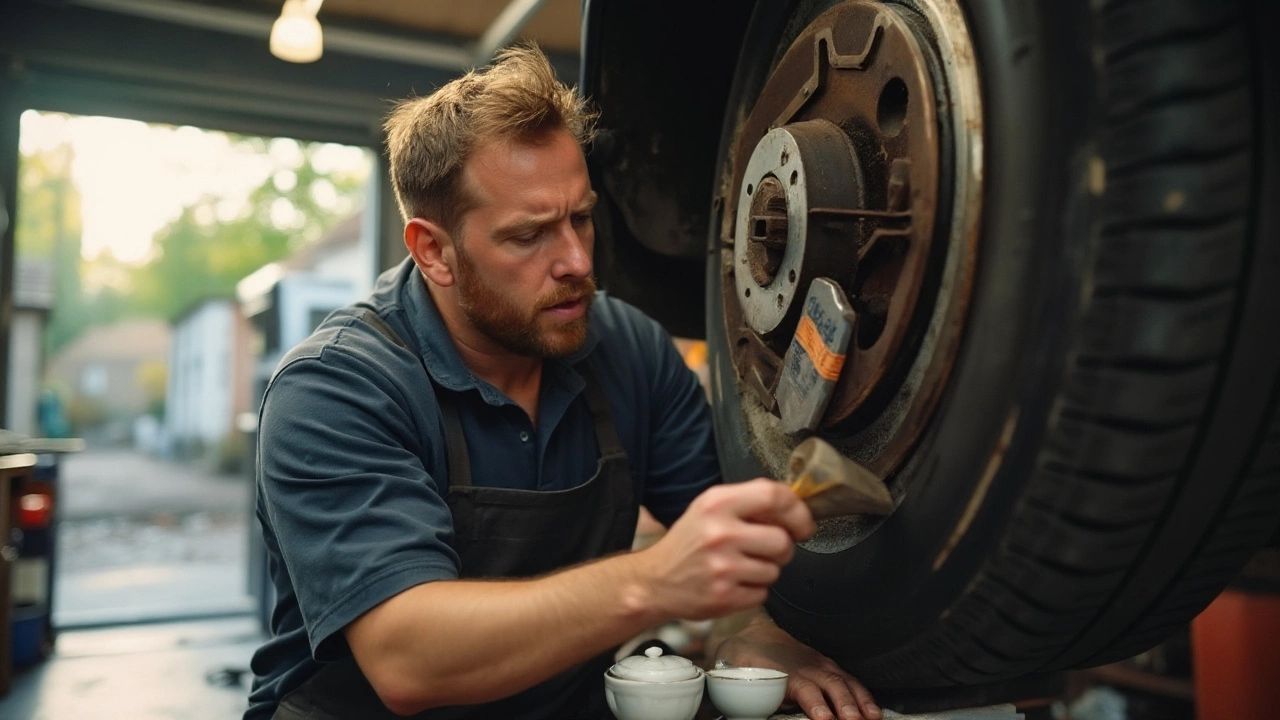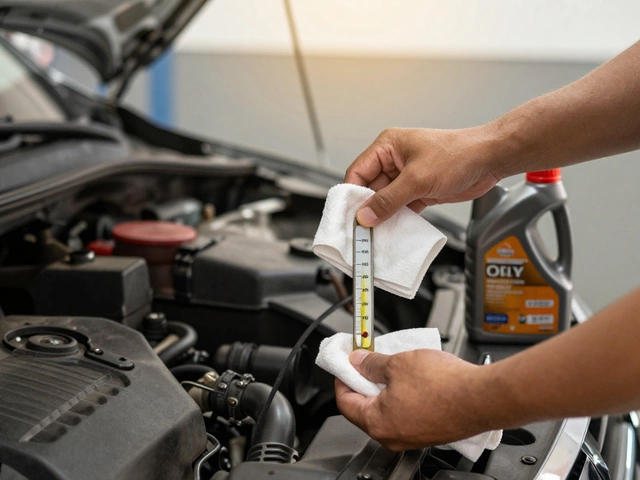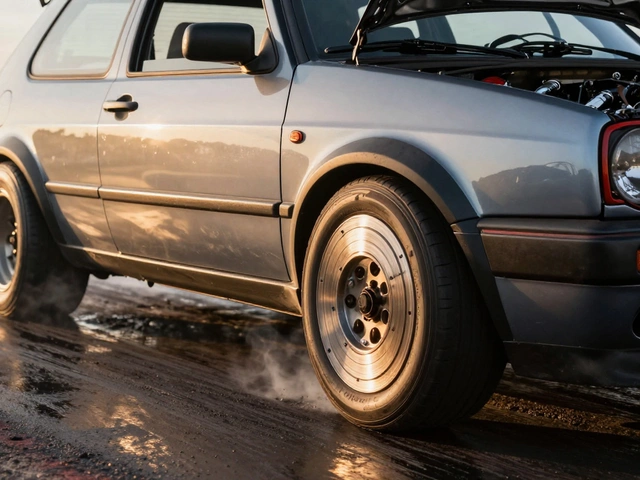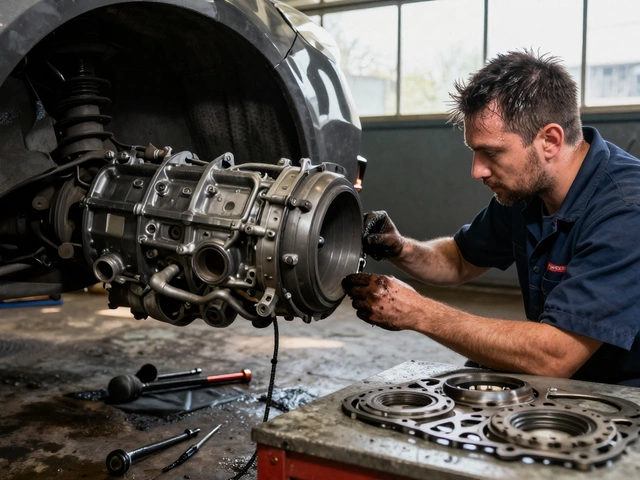When it comes to vehicle maintenance, brakes are a vital component ensuring safety on the road. One of the most common questions many car owners face is whether they can change only the rear brake pads. It might initially seem like a more budget-friendly option, but there are several factors you need to consider before making that decision.
Understanding how brake systems function and the importance of maintaining them could help prevent unforeseen problems. In this discussion, we'll delve into the details of why this decision is more complex than it might appear. From understanding the engineering of your car’s braking system to evaluating the wear and tear on your pads, the insights provided will guide you in making informed choices.
- Understanding Brake Systems
- Significance of Rear Brake Pads
- Pros and Cons of Replacing Rear Pads Only
- Signs Your Brake Pads Need Replacement
- Potential Risks of Uneven Pad Replacement
- Regular Maintenance Tips
Understanding Brake Systems
Delving into the intricacies of brake systems is akin to unraveling the mechanics of a symphony orchestra. Every instrument has its unique function, yet they all work in harmony to create a secure stopping experience. The brake system of a vehicle is a complex network of components operating with precision and interconnectedness. At the core are the brake pads, discs or rotors, calipers, and brake fluid, each playing a seminal role in transforming momentum into heat, thereby stopping the vehicle.
Brake systems predominantly come in two varieties: disc brakes and drum brakes. Disc brakes, known for their efficiency and swiftness in heat dissipation, are often found at the front, where braking force is paramount. The rear typically houses either disc or drum brakes, with drum brakes being more common due to their cost-effectiveness and sufficient functionality for rear applications. One of the underlying principles of braking is weight transfer; when a car comes to a halt, its weight shifts forward, thus demanding more from the front brakes compared to the rear brake pads.
Intriguingly, modern vehicles are equipped with anti-lock braking systems (ABS) that further elevate the safety quotient. ABS prevents the wheels from locking up during emergency braking scenarios, allowing the driver to maintain steering control. Within the realm of these systems lie sensors and modulators that keep a vigilant check on wheel speed and adjust braking force accordingly. With the advent of Brake Assist and Electronic Stability Control, the mundane experience of braking has transformed into a technologically advanced phenomenon.
"Braking system is not just about stopping a car, it's a pivotal part of vehicle safety that requires regular attention and understanding," states an expert from the Institute of Advanced Motorists.
Historically, braking systems have seen exponential advancements, from the simplistic mechanical brakes of early automobiles to the sophisticated computer-controlled systems of today. This progression reflects the automotive industry's relentless pursuit of accuracy and efficiency. Understanding these systems empowers vehicle owners to appreciate the importance of regular maintenance and informed component choices, such as deciding when and which brake pads to replace. Without awareness of these elements, one might underestimate the impact inadvertently altering a single component can have on the car's overall braking performance.
Significance of Rear Brake Pads
In the intricate system of automotive mechanics, rear brake pads hold a fascinating, albeit less renowned, role compared to their front counterparts. While front brakes do bear the brunt of stopping a vehicle, rear brake pads are essential for maintaining stability and balance during braking. This is because when you hit the brakes, the weight of the car shifts forward, demanding more responsibility from the front. However, the rear brakes are tasked with ensuring that this shift doesn't take over completely, which could otherwise result in a dangerous situation.
The significance of the rear brakes becomes more pronounced in vehicles equipped with a front-engine configuration, which rests the vehicle's bulk towards the front. It's interesting to note that rear brakes, often in disc or drum form, provide approximately 20-30% of the total stopping power, which might not sound like much but is critical for a balanced braking system ensuring safe and predictable stops. Without effective rear brakes, the risk of skidding and loss of control increases, especially in adverse weather conditions. This is where Electronic Brakeforce Distribution (EBD) systems come into play, dynamically adjusting force to the rear brakes based on load, further emphasizing their importance.
"Effective brake pads, both rear and front, are integral to vehicle safety. They not only ensure the car stops effectively but also provide stability during braking," says a senior technician at a leading auto repair institute.
One might wonder why rear brake pads tend to last longer than front ones. The explanation lies in their role and construction. Designed with less aggressive friction materials, they wear down at a slower pace. But their longevity shouldn't lead one to neglect regular inspections or replacements as needed. Dismissing such maintenance could lead to costly repairs or compromises on safety later on. Moreover, a common misconception is that all brake pads function similarly across different car models. Not only are there distinct differences between car categories such as sedans, SUVs, and trucks, but even within those, variations exist based on design and performance standards.
Interestingly, a maintenance survey reveals that a significant percentage of rear brake wear gets unnoticed until it reaches a critical stage. This can spring from misconceptions about their durability or the lack of regular checks, leading to a sudden drop in braking efficiency, especially during emergencies. Motorists often get confused about when to change these pads due to the scarcity of audible cues like squealing, typically present in front pads. Hence, understanding the car safety implications of maintaining rear brakes can’t be emphasized enough, as neglect will undoubtedly sneak up when least expected.
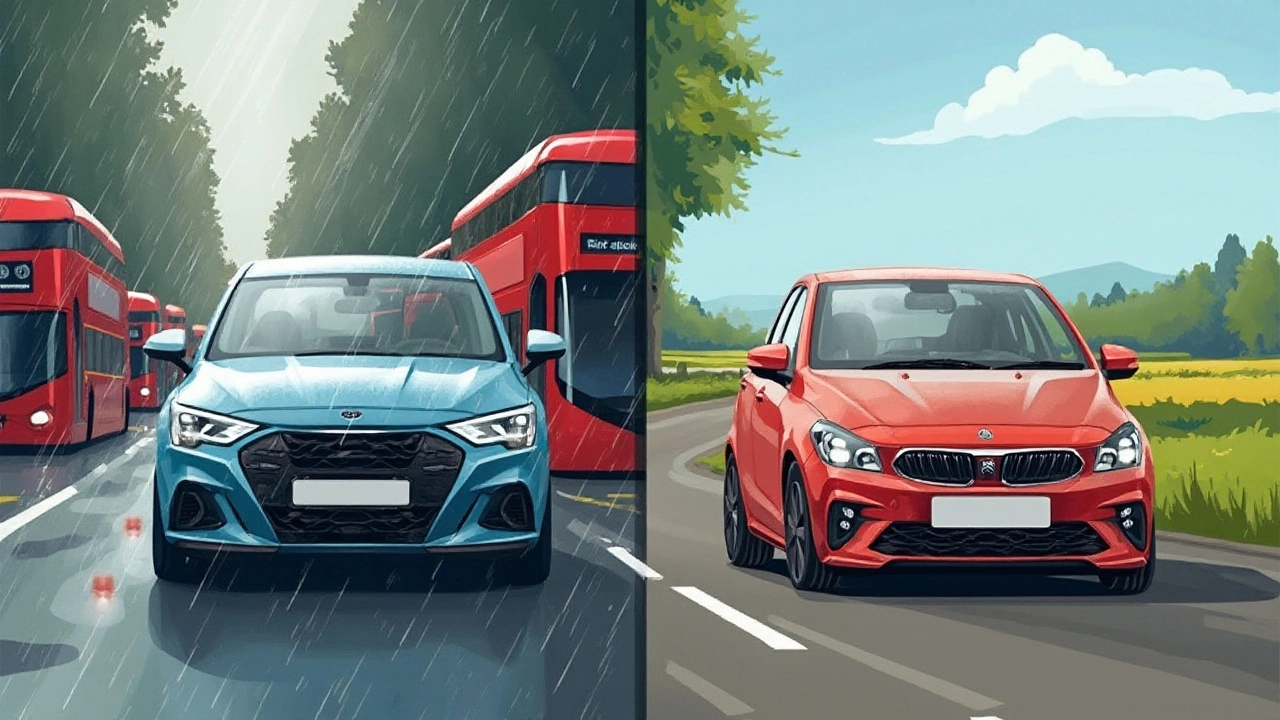
Pros and Cons of Replacing Rear Pads Only
Deciding whether to change only the rear brake pads of your vehicle is a decision laden with various pros and cons. The benefits of replacing just the rear pads primarily revolve around cost. Changing only what seems necessary can save you a significant amount of money. This decision might make financial sense if the rear break pads wear down faster than the front ones. Vehicles often utilize different braking forces with the rear brakes experiencing more wear on certain makes and models. Thus, replacing only the worn-down parts can seem like a pragmatic choice.
Another potential advantage includes how time-efficient this process can be. When you replace only the rear pads, the job is completed more quickly. For individuals who consider their time as precious as their money, this is a factor that doesn't go ignored. Experience also plays a role here. If the rear brakes have shown a pattern of needing replacement more often, changing only the rear pads becomes almost intuitive, a representation of practical experience overtaking textbook guidelines.
However, one needs to weigh these benefits against the consequences that might arise. One significant downside is the possibility of imbalanced braking. When you replace only the rear pads, the different levels of wear and performance between the front and rear can lead to inefficiencies or even potential safety issues. This can affect everything, from braking distance to vehicle handling. Imbalanced brakes can famously cause the car to skid under sudden braking, making it vital to keep a uniform wear pattern whenever possible.
Moreover, there’s the aspect of uneven wear patterns that can eventually lead to more frequent maintenance demands. Inconsistent maintenance approaches could escalate into more severe issues over time, possibly necessitating expensive repairs that would far outweigh the savings initially gained. It's like the old saying goes, 'Penny wise, pound foolish,' which might hold true in such situations. Media outlets focused on vehicle safety have reiterated similar concerns several times over.
Another angle to consider is how incomplete replacements can impact the anti-lock braking system's (ABS) performance if your car is equipped with one. The ABS relies heavily on balanced pressure and consistent pad thickness to function optimally. There's a reason brake systems are designed as they are, and throwing them off-kilter with uneven thickness can complicate matters, rendering some of both older or newer ABS technologies less effective.
According to the European Commission's transport department, ‘Efficiently functioning brakes are fundamental to road safety and can significantly reduce accident risk when properly maintained.’These insights underline why some experts often advocate for a full set replacement. Even though the financial implications can initially deter vehicle owners, understanding the intricate relationship between brake components and long-term vehicle health can make the difference in ensuring driver and passenger safety on the road.
So, the next time you ponder over whether to replace only the rear brake pads, remember that while the practice has its short-term perks, the potential costs – be them financial, safety, or simply regarding peace of mind – suggest that a holistic brake maintenance approach is often the wiser choice. As a last metaphorical mantra: treat your breaks as a symphony, each part working in harmony to keep the music – or in this case, your car – running smoothly and safely.
Signs Your Brake Pads Need Replacement
Knowing when your brake pads need replacing is crucial to maintaining vehicle safety. One of the most obvious indicators is an unusual noise. If you hear a squealing, screeching, or grinding sound whenever you apply the brakes, it might be time to inspect your rear brake pads. This noise is typically a built-in wear indicator producing sound as a signal to alert the driver. The brake system's health should not be ignored as it serves as the primary mechanism for stopping the vehicle safely.
Another telltale sign is a change in feel. If you start experiencing vibrations when you brake or the pedal feels unresponsive or spongy, the integrity of the brake maintenance could be compromised. These vibrations often occur when there is uneven brake pad wear. A decrease in performance or increased stopping distance is a dangerous symptom that requires immediate attention as it might indicate that the pads have worn down completely.
"Brake pads are an integral part of your vehicle's safety system. Failing to replace them on time could lead to brake failure, which is not only costly but also potentially life-threatening," says John Davis, a respected automotive expert.Visible wear can often be checked through the wheels without needing to remove them. If you can, inspect the pads, and if they look less than a quarter of an inch thick, it’s recommended to get them replaced as soon as possible. Most mechanics suggest routine car safety checks every six months, especially for older models. Regular inspections help catch these issues before they escalate.
Pay attention to warning lights on your dashboard. Modern vehicles are equipped with sensors that alert you when the brake pads are nearing the end of their life. When the brake warning light is on, coupled with any of the aforementioned symptoms, it’s a strong indication that replacement is necessary. Addressing the issue promptly can save significant amounts in auto repair costs in the long run.
Monitor Brake Fluid
An often-overlooked symptom involves the brake fluid. Wear on brake pads might cause the fluid level to drop, as more of it gets stored in the caliper to cover the pad’s reduced thickness. It’s advisable to monitor your brake fluids regularly as consistent low levels can not only be an indicator of pad wear but also point to leakage problems. This aspect of auto repair and maintenance is often quick to check yet profoundly significant in ensuring safety.
Drivers should not wait until noticeable issues occur. Routine inspections of your entire system, including pads, rotors, and calipers, are advised to be done periodically. Maintenance is usually considered a routine process, but the safety it guarantees is invaluable. Keeping a consistent schedule for such maintenance and staying aware of key indicators can prevent many unwanted situations and expenses.

Potential Risks of Uneven Pad Replacement
When you consider replacing only the rear brake pads, several risks could arise, possibly affecting your vehicle's performance and safety. The brake system in most cars is designed for balanced operation, which means that all components must work in harmony to provide optimal stopping power. Disparities between the front and rear brake pads can lead to a misaligned braking force. Such an imbalance not only compromises the efficiency of stopping but might also accelerate wear on other components. Moreover, it can cause the vehicle to respond unpredictably in sudden stop scenarios. This instability can be particularly dangerous during wet conditions, where precise control is paramount. Thus, addressing only the rear brakes could unsettle this balance and manifest in uneven brake application.
In some cases, uneven brake pad replacement can result in increased wear and tear on the vehicle's rotors and other brake system parts. This wear happens because of the disproportionate workload placed on the front or rear component of your vehicle’s brakes. Over time, those parts may deform or require replacement earlier than their usual service life, leading to additional expenses. There’s also the risk of ‘brake fade,’ where the braking system gradually loses its effectiveness under extended use, particularly with high speeds or carrying heavier loads. If you're replacing rear brake pads only, think about how it could lead to this and the potential impact on your driving safety.
It's worth considering expert opinions on this matter. According to the engineering team at a major automobile manufacturer, "Ensuring balanced wear on both front and rear brake pads is crucial for maintaining optimal stopping power and vehicle stability. Replacing only one side or part can significantly disturb this balance, and is generally not recommended in professional practice." Such insights highlight the importance of understanding the engineering behind your choices. Ignoring these warnings could ultimately reduce your car’s lifespan and result in more unexpected breakdowns and potentially higher costs down the road.
When examined further, the dynamics of modern braking systems reveal complex hydraulic and electronic interactions. These systems are designed to adapt to consistent conditions. Introducing new brake pads in only the rear while the front remains worn can confuse the sensors and lead to incorrect assessments of the vehicle’s braking needs, potentially resulting in less efficient braking action. This misreading paves the way for errors that could worsen and override your safety systems, adding another layer of risk to consider when deciding on rear pads only.
Considering all the potential implications of changing just the rear parts, it's clear that balanced brake maintenance is not just a good idea but rather essential for both performance and safety. By maintaining your car’s brake system with care and considering a whole-system approach when doing repairs, you ensure it performs optimally and safely, regardless of the driving conditions or environments faced. Skimping on something as critical as brakes might save some pounds today but could end up costing significantly more in the long term, whether in repairs or, more critically, in stakes of safety.
Regular Maintenance Tips
Maintaining your vehicle's brake maintenance system isn't just about ensuring safety; it's about extending the life of your car and saving money in the long run. Regular checks and timely interventions play a pivotal role in keeping your brakes in top condition. To start with, make it a habit to ask for a brake inspection during your routine car servicing. This way, trained eyes can spot the wear and tear before it turns into a more costly full-scale repair. It's not just about the pads, though; every component in the braking system must work harmoniously to ensure accurate stopping power. Make sure to check the brake fluid, lines, and rotors as well.
Another overlooked aspect is paying attention to the car's signals. If you ever feel a spongy sensation when pressing the brake pedal, hear strange noises like squealing or grinding, or if the car pulls to one side when braking, it’s time to act. Such symptoms often hint towards an issue with the brakes that need immediate attention. By catching these signs early, you can prevent more significant damage.
"Routine brake inspections and timely maintenance can avert many of the common failures we see," says John Thomson, a renowned auto mechanic based in Leeds.
One effective practice is to engage in visual checks of your brake pads. Over time, pads naturally wear down, reducing their effectiveness. Look through the wheels to see the pads. If you notice they are less than a quarter inch thick, it's time for a replacement. For those unfamiliar with brake pad thickness or anyone uncomfortable performing a check, a professional inspection can quickly provide the peace of mind you need.
Sometimes the root of brake issues lies in improper car loading. Overloading can add excess stress to the braking system and cause faster wear. Always ensure that you're aware of the manufacturer's recommended weight limits for both passengers and cargo. This seemingly small detail can make a world of difference in your vehicle's braking performance.
Keep an eye on the weather conditions as well. If you're driving in rainy or snowy conditions, make sure to clean your brakes after such drives. Moisture can lead to rust, further diminishing the longevity of brake components. Simply taking a moment to dry the brakes by braking lightly after a wet drive could be a vital step in brake upkeep. Lastly, for those residing in areas with plenty of dirt roads, dust accumulation can be detrimental. Consider washing the underside of your car regularly or get a more thorough cleaning if you notice a buildup.
Engaging properly in auto repair involves much more than just fixing issues as they arise. It’s about anticipating problems and preventing them. Regular maintenance is a proactive approach that ensures not only the longevity of your brake system but also the safety of you and your passengers. With these tips, you can glide smoothly on the roads with the confidence that your brake system is in optimum condition.
